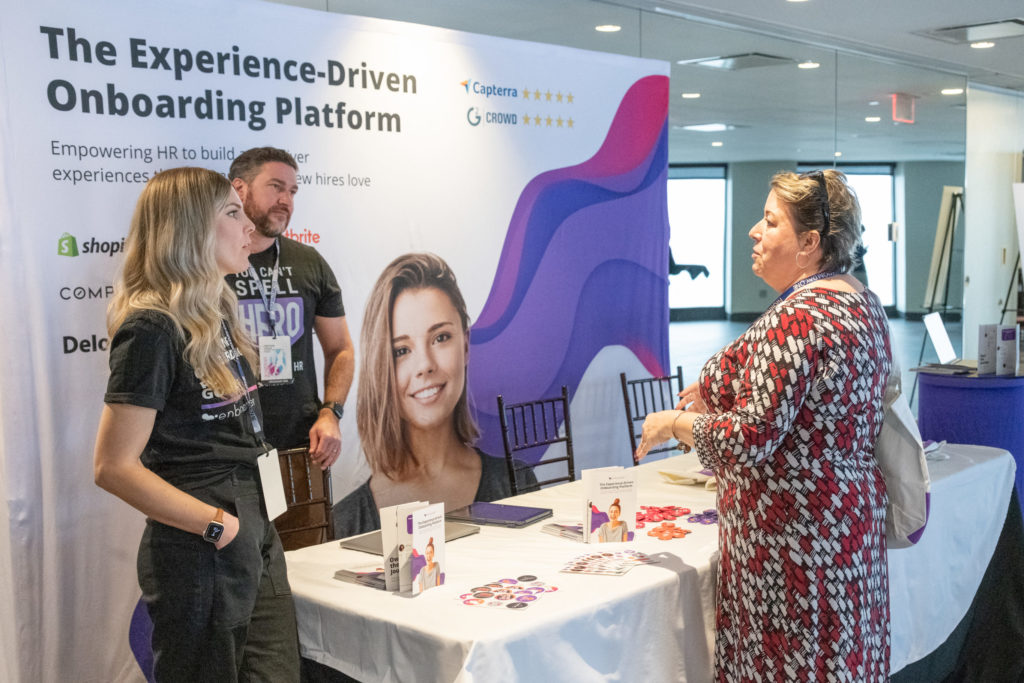How Zapier Scaled the New-Hire Experience for Explosive Growth: a Case Study


Employees begin to form their first real impressions of an organization during the hiring and onboarding process. A troubled onboarding system is one that provides an inconsistent or overwhelming experience for new hires. Other problems include too much time spent on manual tasks, poor hiring-manager engagement and participation, and lack of visibility within the system to capture real time impact.
On the other end of the spectrum, Enboarder uses an experience-driven onboarding platform to help customers like McDonald’s, Verizon, Shopify, and Zapier, an automation platform. Zapier, for example, has a workforce that is 100% remote, and has employees in 30 different countries. This complicates hiring and onboarding new team members. Zapier used Enboarder to scale onboarding during a period of explosive growth. “They’ve been hailed as that $7 billion Netflix of productivity because of their incredible business growth in the no- code productivity space,” said Matt Frank, enterprise customer-success manager for Enboarder, during a thought leadership spotlight at From Day One’s Boston conference earlier this year.
Zapier’s product is a tool that helps to automate repetitive tasks accomplished with two or more applications. With Zapier, your Facebook post will also appear on a specified Slack channel and will be sent via Mailchimp and/or Gmail via a Zap. When you send a job offer letter, Zapier then triggers an onboarding workflow. However, Zapier’s own onboarding system was misaligned. “Everything happening behind the scenes in HR was a nightmare,” said Frank. “Our open API enabled them to use Zapier, their own product, with their other HR systems and automate nearly all their onboarding tasks with an emphasis on employee experience woven into all the platform’s features.”
Here’s what Zapier's onboarding process looks like now:
The hiring manager is involved in the pre-boarding and onboarding experience. As soon as a new hire accepts the job, the hiring manager is then prompted to send them a congratulatory welcome text message, which can be done from within Enboarder. With that welcome message, the new hire is also prompted to complete a survey about their interests and hobbies, as well as pertinent operations information such as their address, emergency contact, and so on. This information is, again automatically, sent to the HR management system platform. In addition, two weeks before the new hire’s start date, Enboarder sends a reminder nudge to the hiring manager to create a 90-day work plan for that new hire.

Research on onboarding best practices has shown that having a “buddy program” in place increases retention. A “buddy” helps new hires become acquainted with essential information and unstructured knowledge about workplace culture, company policies, perks, and benefits, among other things. “A new-hire buddy program can also be incorporated into the program,” said Frank. “At Zapier, ‘buddies’ are called Zap Pals, and with Enboarder, they too are notified via Slack with instructions on how to be a great Zap Pal.”
With the power of Enboarder’s automation platform, Zapier has saved its team more than 206,000 minutes otherwise spent on manual onboarding tasks. If your schedule is a traditional 9-to-5, five-day work week, that’s the equivalent of 86 work weeks saved. Zapier used that time to rethink what makes new hires successful. They defined their onboarding pillars based on internal and external research to be setting expectations, creating access to resources, building relationships and interpersonal connections, and communicating effectively across the business.
Zapier also reported a 10% increase in hiring-manager participation with onboarding initiatives. “This is a huge win,” Frank said, “because the hiring manager is critical to the onboarding experience of a new hire.” New employees at Zapier are now 2.5 times more likely to check ‘strongly agree’ on the survey item asking whether their onboarding was exceptional when their manager has an active role.
Moreover, there was a 70% decrease in employee turnover within the first three months of employment, a 65% increase in productivity, a 10% to 15% increase in sales appointments, and an impressive 93 out of 100 employee net promoter score (eNPS), a metric used to measure employee satisfaction and loyalty to the organization.
Editor’s note: From Day One thanks our partner, Enboarder, who sponsored this thought leadership spotlight.
Angie Chatman is a freelance writer who covers business, technology, education and social justice. She earned her MBA from the MIT Sloan School of Management.
The From Day One Newsletter is a monthly roundup of articles, features, and editorials on innovative ways for companies to forge stronger relationships with their employees, customers, and communities.